EXHIBITIONS ESTAÇÃO IMAGEM
2020 COIMBRA
FREE ADMISSION
\ 5 JUL—27 SET
AWARD CEREMONY
18 JUL / SAT / 15H
CONVENTO SÃO FRANCISCO AUDITORIUM
18 JUL / SAT / 15H
CONVENTO SÃO FRANCISCO AUDITORIUM
Note:
Exceptionally this year the jury will deliberate remotely using the eContest platform developed by EOX Ltd.
Seating at Convento São Francisco will be limited in accordance with the health authorities’ guidelines.
The winner of Grant Estação Imagem 2020 Coimbra will receive a 600€ Fujifilm coupon in addition to the grant, and the winner of the Picture of the year will also receive a 400€ Fujifilm coupon, both sponsored by Fujifilm.
The classes can be accessed in the link available in this newsletter, at Estação Imagem website, Instagram and Facebook page. Follow the link to join each class at the scheduled day and hour.
JUL 13—17
OPEN LECTURES
LIVESTREAM VIA ZOOM
LIVESTREAM VIA ZOOM

© DR
ILVY
NJIOKIKTJIEN
HOW TO WORK AS A PHOTOJOURNALIST IN THE PRESENT
Award winning independent documentary photographer and multimedia journalist
Canon Ambassador
JUL 13
10H00—12H30
ZOOM LINK
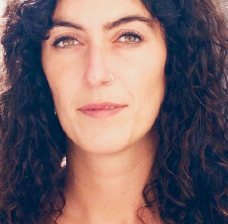
© DR
ANA
BRÍGIDA
HOW TO DESIGN AND DEVELOP A GRANT PROJECT ON PHOTOGRAPHY
Photojournalist winner of the Grant Estação Imagem 2019 Coimbra.
JUL 14
10H00—12H30
ZOOM LINK
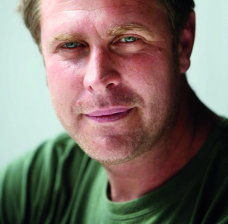
© DR
BRENT
STIRTON
STORIES OF PHOTOJOURNALISM
South African photographer, a Senior Correspondent for Getty Images and a Fellow of the National Geographic Society. He specializes in documentary and investigative photojournalism. Since 2007 he has focused his attention on man’s intersection with the environment.
Canon Ambassador
JUL 14
15H00—17H30
ZOOM LINK
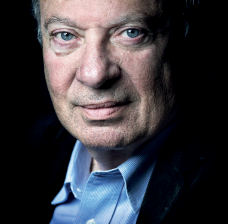
© JOEL SAGET
FRANCIS
KOHN
FROM OBSCURITY TO STARDOM: THE FORCE OF PHOTO IN THE NEWS BUSINESS
Ex-head of photography at Agence France-Presse [AFP].
JUL 15
10H00—12H30
ZOOM LINK
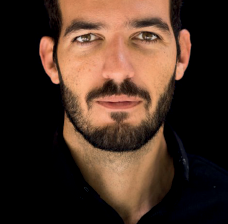
© RENATA BRITO
FELIPE
DANA
CONFLICT COVERAGE AND INTERNATIONAL EVENTS
Brazilian photojournalist from The Associated Press. Dana was part of the AP team of final nominees for the Pulitzer Prizes of 2017, 2018, and 2019.
JUL 16
10H00—12H30
ZOOM LINK
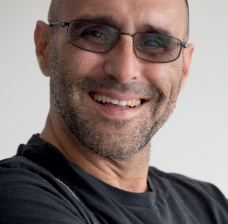
© LUÍS BARRA
JOÃO
SILVA
STORIES OF PHOTOJOURNALISM
Photographer for The New York Times since 2000. Member of the Bang-Bang Club, the South Africa-based group of photojournalists who documented the end of apartheid.
JUL 17
10H00—12H30
ZOOM LINK
EXHIBITIONS
SALA DA CIDADE
CMCOIMBRA
TUE TO SAT
13H00—18H00
Ø SUN, MON AND HOL
CURATOR
LUÍS VASCONCELOS
JUL 5—SEP 26
SOS CLIMA
WITH THE SUPPORT OF AGENCE FRANCE-PRESSE [AFP], THE ASSOCIATED PRESS [AP], EUROPEAN PRESSPHOTO AGENCY [EPA], GETTY IMAGES, AND REUTERS

© GETTY IMAGES / KEVIN FRAYER Smoke billows frame a neighbourhood located next to a coal fired power plant in Shanxi, China, on november 26, 2015. Heavy dependence on coal for energy has made China the source of nearly a third of the world’s total CO2 emissions widely pointed as the primary cause of global warming.
In times past, the French magazine Paris-Match’s official subtitle read: “the weight of words, the shock of images.” Climate changes have outstripped that message. Images and words now entwine in the demanding precision of information flows – a necessity given the complexity of the issues at hand. To be sure, many of the images in this exhibition are truly shocking. And this shock calls for a more in-depth reading of said images, matching the same depth we seek to convey through words. Some of these pictures are visual essays urging us to go beyond that first blow and turn to the details, the processes, and to ask why the enormity of the environmental aggressions is falling so unevenly over humans.
One highlight emerges: the brink of catastrophe after the long, accumulated damage. Open mines and ravaging wildfires. Striking waste dumps and the tornados’ dramatic aftermaths. Persistent drought and floods.
Unbreathable air and sea animals wrapped in plastic and crude oil. Ice melting and loss. The destruction, poverty, and suffering. Time now conflates the sudden disaster with the protracted destruction of the Environment.
Ruin has become so overwhelmingly clear. Not even human blindness, ignorance and the greed of a deluded
few can conceal the ruin anymore.
This exhibition does have “the weight of words” and the “shock of images”. It echoes that urgent appeal that we all need to respond to. Amidst this remarkable selection, the images of Greta Thunberg and the youth of ‘Fridays for
the Future’ climate movement speak directly to us. Through them, we are left with the feeling that there is still hope
to change course.
LUíSA SCHMIDT
PINHO DINIS GALLERY
CASA MUNICIPAL DA CULTURA
MON TO FRI
09H00 — 19H30
SAT
11H00 — 13H00 / 14H00 — 19H00
Ø SUN AND HOL
15 JUL—15 SET
MON TO FRI 09H00—18H30
Ø SAT, SUN AND HOL
BRENT STIRTON
is a South African photographer, a Senior Correspondent
for Getty Images and a Fellow of the National Geographic Society. He specializes in documentary and investigative photojournalism. Since 2007 he has focused his attention on man’s intersection with the environment.
He is regularly published in National Geographic Magazine, GEO, Le Figaro, Stern and other international publications.
He has worked with conservation groups around the world, spending many months in the field in the course of documenting their work. Brent feels that the work of these people is vital and under-recognized.
JUL 5—SEP 26
BRENT STIRTON
WILDLIFE RANGERS
WILDLIFE RANGERS
EXHIBITION SPONSORED BY CANON PORTUGAL

© BRENT STIRTON A four man anti-poaching team permanently guards northern White rhino on Ol Pejeta Conservancy. OL PEJETA CONSERVANCY, KENYA, JULY 13, 2011
I am an environmental photojournalist. I spend 70% of my time covering the intersection of man and nature. I wish it could be 100% of my time. I feel conventional photojournalism is well covered and this sector is not. A lot of my focus is on the small number of men and women who protect our natural heritage. These conservation rangers live spartan lives in isolated places, they’re poorly paid and are often in significant danger, yet we expect them to protect our natural world without any assistance from the rest of us. I’ve had the privilege of living with these groups on a number of occasions over the last 12 years and these are a few of the images I value from those times. It’s a hard and often thankless life for those men and women. I hope that some of my images help to pay tribute to them. Conservation today is a war of attrition, most of the time it is ill-equipped rangers versus heavily armed and protected poachers, organized crime, and corrupt politicians. I have photographed wars, famines, diseases, all the usual suspects in my business but it wasn’t until 2007, when I photographed 9 dead mountain gorillas in the Democratic Republic of Congo, that I actually felt useful. For the first time I realized the innate connection between the world of man and the world of nature and how conflict often blurs the lines between them. It’s all happening in the same space; we just don’t prioritize nature and that is to our detriment. We can see the consequences all around us if we only look. For me, personally, animals are like children, they are innocent; and they deserve our love, respect and above all, our protection. Ironically, we live in an age where the world is more connected than ever before. There is tremendous potential to arrive at a common value system for our planet and for all earth’s inhabitants. We already have too many people on this planet, and if we are to avoid inevitable and massive failure for our civilization, leadership will have to prioritize the environment as much as it does economics. They do not exist in isolation from each other.
BRENT STIRTON
PEDRO OLAYO (FILHO) GALLERY
CONVENTO SÃO FRANCISCO
MON—SUN
15H00 — 20H00
JUL 5—SEP 6
IVOR PRICKETT
END OF THE CALIPHATE
END OF THE CALIPHATE
ACKNOWLEDGEMENTS: DAVID FURST / THE NEW YORK TIMES

© IVOR PRICKETT A young man suspected of being an ISIS militant was found hiding in a heavily destroyed part of the Old City and was handed over to the security forces in the area. IRAQ, SEPTEMBER 2017'
Documenting the fight to defeat ISIS in Iraq and Syria – 2016–2019.
By mid-July 2017, it seemed incomprehensible that anyone could be left alive after weeks of clashes in Mosul’s Old City, the last major redoubt of the Islamic State in Iraq. Yet pockets of fanatical fighters continued to resist. At the same time — horribly and amazingly — civilians continued to emerge from the battle zone.
At a forward base in the Maydan district of the Old City, special forces brought in a man holding a boy no older than 2. The barefoot man, wearing a bloodied vest and dirty shorts, didn’t know the child. The soldiers immediately suspected the man of using the boy as a human shield to emerge from the rubble, and took him aside. It was a surreal scene to watch, as the battle- hardened men, expert killers, put down their weapons and cared for the young, fragile boy. It was as if for a moment, this child made these men forget the lives they had taken and the friends they had lost over the past eight months. Or, maybe, he made them remember.
I spent most of a year photographing the military campaign to reclaim Iraq’s second largest city, most often embedded
with Iraqi special forces. I documented the fighting, of course, some of the most brutal urban combat since World War II. But
I always felt my real function was to amplify the stories of the individuals whose lives were ones of relentless turmoil and tragedy. The frontline pictures dimensionalize the old cliché of being ‘caught in the crossfire,’ for both civilian and combatant. Then there are the images that capture the post-war reality: people returning to a devastated city to try to reclaim homes and lives amidst the abandoned corpses of Islamic State fighters; families still searching, months later, for missing loved ones. Hundreds of thousands had fled a battle that took the lives of thousands of civilians and left large swathes of the city in ruins. But the recapture of Mosul was a critical step in the downfall of the Islamic State. By October, the capital of its so-called caliphate, Raqqa, in Syria, had fallen as well. In the end, ISIS men were corralled into a tiny sliver of land along the banks of the Euphrates river in south east Syria, near the border with Iraq. The ‘final’ battle in early 2019 to rout them took months rather weeks because of the vast numbers of civilians, mainly their wives and children, that they were using as human shields. As
the dragnet of Kurdish-led American backed forces closed in on the die-hard fighters who remained, tens of thousands of shell shocked, battered people streamed out of this tiny area. They are now languishing in lightly guarded detention camps in northern Syria still chanting ISIS slogans, declaring that ‘the State will rise again’. The fight to defeat ISIS and their poisonous ideology is far from over.
IVOR PRICKETT
PINHO DINIS GALLERY
CASA MUNICIPAL DA CULTURA
MON TO FRI
09H00 — 19H30
SAT
11H00 — 13H00 / 14H00 — 19H00
Ø SUN AND HOL
15 JUL—15 SET
MON TO FRI 09H00—18H30
Ø SAT, SUN AND HOL
FELIPE DANA was born in Rio de Janeiro, Brazil, in 1985. In 2009, he joined the Associated Press and decided to dedicate himself solely to photojournalism, focusing on the social upheaval in his native city
in the run up to the 2014 World Cup and 2016 Olympics. Dana also documented urban violence in Latin America, the Zika epidemic, the migrant crisis in Europe and Africa, and conflicts in the Middle East.
His work has received a number of awards including World Press Photo, POYi – Pictures of the Year International and Batam, OPC
- Overseas Press Club, NPPA – National
Press Photographers Association, CHIPP – China International Photo Competition, the Atlanta Photojournalism, among others. Felipe was also part of the AP teams of finalists for the Pulitzer
in 2017, 2018, and 2019.
JUL 5—SEP 26
FELIPE DANA
HONG KONG: FIGHT FOR FREEDOM
HONG KONG: FIGHT FOR FREEDOM
WITH THE SUPPORT OF THE ASSOCIATED PRESS [AP]

© AP / FELIPE DANA A protester kicks back an exploded tear gas shell in Hong Kong. TUESDAY, OCTOBER 1, 2019
This series chronicles the ongoing anti-government protests in Hong Kong.
For many Hong Kong demonstrators, identity is entwined with surveillance. Their signature masks, umbrellas and top-to- bottom black outfits shield them not only from physical threats like tear gas and rubber bullets, but also from the invisible dangers of personal identification and tracking by the state.
In June 2019, massive protests erupted following an extradition bill that would have allowed Hong Kong residents to be sent to mainland China for trials. The former British colony returned to Chinese control in 1997 and though it maintained much of its autonomy under an arrangement known as “one country, two systems,” protesters say the Chinese government has been slowly stripping the city of its rights. After months of protests that disrupted public transportation and the city’s international airport, Hong Kong leader Carrie Lam agreed to suspend the extradition bill in September 2019.
Still, demonstrations have not stopped but instead developed to include demands for full democracy and an inquiry into police action. Clashes between law enforcers and demonstrators have become increasingly violent, with riot police firing live bullets and protesters attacking officers and throwing petrol bombs.
FELIPE DANA
EDIFÍCIO CHIADO
TUE TO FRI 10H00—18H00
SAT 10H00—13H00 / 14H00—18H00
Ø SUN, MON AND HOL
ANA BRÍGIDA 34, initiated in photography in 2005 at IFP, Lisbon where she later completed her degree. Moving to China in 2009, Brígida furthered her studies
in photojournalism and documentary photography at the master programme by the Dalian Institute of Image and Art and the University of Bolton in the UK, during which she developed her skills and became passionate about video and multimedia. Between 2012 and 2013, this time in New York, Brígida completed her internship with Magnum and also worked at the Bronx Documentary Center where
she showcased her work and exhibition entitled “How the Other Half Still Lives”. Brígida is a first prize winner of Prize Estação Imagem 2017 in the category Contemporary Issues and Nature. In that same year she also won the first prize of UNESCO’s themed competition on human rights and integration. Currently works as
a freelancer based in Lisbon. Her work has been published in various news outlets including Expresso, Público, The New
York Times, The Washington Post, Stern Magazine, Le Monde, Geo Magazine, and the Helsingin Sanomat.
5 JUL—9 AGO
ANA BRÍGIDA
INLAND
INLAND
GRANT ESTAÇÃO IMAGEM 2019 COIMBRA

© ANA BRÍGIDA Life is back in the valley. reforestation project by Gone West and Wildlings with plantation of 15K trees of 15 native species in the valleys of Benfeita.
This is about a love story between man, nature, and animals. The country’s inland regions have been going through continued de-population for many years now be this due to lack of interest in rural work or to the utopian pull toward large cities and the seemingly prosperous and vibrant lives they offer. The exodus to metropolitan regions has left a track of deserted villages, but also derelict houses and crops and pastures left to the wilderness and at the mercy of wildfires.
Estranged from nature and land, today’s urban lifestyle of mass consumption and technology is not a compelling way to live anymore for many people. For some a better way is found in the quiet inlands where they are picking up the lost traditions of bygone generations and giving it new breath and meanings. Their dream is to live among nature and tend to her. To live in a more sustainable way in that the use of resources closes in a full circle. To make do with whatever the land offers – to eat, to build, to heal, and to meditate.
Across Serra do Açor there are now an estimate 1,000 new inhabitants scattered across the region’s boroughs. Mostly foreig- ners but also some Portuguese have brought new life to these lands. At Benfeita, 35 new children cheer up the village once and long barren of life and energy.
They are advocates of indigenous forest species and fight against eucalyptus mass plantations and monoculture, they have rebuilt the many homes wrecked by the 2017 fires, and they have lifted whole communities. A great many practise permacul- ture and some host volunteers keen to learn about it. Eventually, some end up buying plots and settle for a new life. The everyday hinges on time to live – to plant, to work, to rest and, more than anything, to relate.
The newcomers have picked up on the ancient techniques combined with the resources at hand. For instance, using shale sto- ne as in the vernacular building types and resorting to wood stockpiled from the recent wildfires, or adding whatever the land gives. Some have goats and sheep. All the animals have a name.
They have set up a new economy and a currency of their own – the ‘star’ –, two handcraft markets, a project of community learning, an association, and a store of second-hand clothes, among many other things. They come together to share common interests but they live autonomously with each family tending to their own project.
Life is not always easy and the work in the uplands is often hard. But a strong will beats harshness. They unite around the common good and the love for nature.
ANA BRíGIDA MARCH 2020
MOSTEIRO DE
SANTA CLARA-A-VELHA
TUE TO SUN AND HOL
10H00—18H00
Ø MON
CURATOR
LUÍS VASCONCELOS
PATRICK CHAUVEL Born in Paris in
1949, Patrick Chauvel is a journalist, photographer, documentary maker, and writer. From the Vietnam War in 1968 to Syria in 2019, he covered most of the main armed conflicts of the past fifty years. His photos have been published by Newsweek, Time Magazine, Life, Stern, Paris-Match, VSD, etc. and have won numerous awards including the World Press Spot News in 1996 after a report in Chechnya.
In 2014, he created the Patrick Chauvel Fund set out to bring together all of his photographic work, to create a platform for collective debate around the profession of war reporter and to serve as a relay between generations particularly by bringing forth emergent photographers whose works are less known. In 2020 the Patrick Chauvel Fund will open its doors to the public in
the Caen Memorial Museum (Normandy, France).
www.fonds-patrickchauvel.com
www.fonds-patrickchauvel.com
JUL 5—AUG 16
PATRICK CHAUVEL
FAVELAS CLAMPDOWS
FAVELAS CLAMPDOWS

© PATRICK CHAUVEL The Battalion of Actions with Dogs or BAC in action, at favela Arara in rio de Janeiro. A 11 year old vigilante and a drug trafficker are arrested. JANUARY 17, 2013
In the lead up to the football World Cup and the Olympic Games, the city of Rio de Janeiro – the Brazilian megalopolis and one of the most violent cities in the world – has been swept by a waging, constant war against drug traffickers. A high-risk “pacification” policy unfolds.
‘The government has let it go for thirty years. It did not pay attention to the poor, the favelas multiplied, and the traffickers ended up replacing the absent state’, as put by a major of the military police. So much so that in 2009 Rio held the record for the most dangerous city in the world, with more than 4,800 dead by bullets, stabs, axes, or machetes. More than half of the homicides are directly linked to drug trafficking. That same year, the police killed 1,188 people and counted 118 deaths in their ranks. The police militias, the “liga da justiça”, started to receive a premium for each trafficker killed – the ‘sheriff’ bonus. The drug traffickers saw the police as just another gang only with better arms. In that same year of 2009, during President Lula’s second term, the government launched a vast program to regain control of the hotspot areas: the favelas. Several special force teams of the military police are carrying out these ‘pacification’ operations in the favelas.
The ‘cleansing’ accelerated in the lead up to the 2014 World Cup and the 2016 Olympic Games. However, out of the 1020 favelas listed, only around 30 are ‘pacified’. This means that the traffickers were either arrested or eliminated. There has been a preference for the latter option.
PATRICK CHAUVEL
CENTRO CULTURAL
PENEDO DA SAUDADE
TUE TO SAT 14H00—20H00
Ø SUN AND MON
GUILLERMO ARIAS A regular collaborator of Agence France Presse (AFP). Arias’ work has been awarded many times, including, among others:
Visa d’or News 2019 award, the highest prize given at the “Visa pour l’Image” festival; Istanbul Photo Awards 2019 1st place
in Story News; The Best of Photojournalism 2010, Honourable Mention on both Domestic News Picture Story and Domestic News Singles; POY Latam 2019, 1st place in spot news singles; 67th Pictures of the Year International, Excellence Award on Spot News; Photographers Giving Back Award, 1st place on News Picture of the Year 2009; The Deadline Club New York City Chapter Spot News Photo 2009; Premio Nacional
de Periodismo Cultural Fernando Benitez 2009 for the story “Los muertos de todos los días” [The dead of the everyday];
1st place in the second POY Latin America, Spot News Singles.
JUL 5—SEP 27 ø AUG
GUILLERMO ARIAS
THE CARAVAN
THE CARAVAN
WITH THE SUPPORT OF AGENCE FRANCE-PRESSE [AFP]

© AFP / GUILLERMO ARIAS A truck with mostly Honduran migrants in a caravan passing by a wind farm on the road from Santiago niltepec to Juchitan. NEAR LA BLANCA, OAXACA STATE, MEXICO. OCTOBER 30, 2018
Central American migrants traveling to the United States is a longtime phenomenon. Over the past decade there has been a rise in the number of families and unaccompanied children crossing the US-Mexico border. Most of them are people fleeing extreme violence, insecurity and poverty, coming from the Northern Triangle of Central America — Guatemala, Honduras, and El Salvador. However, they were put on the spotlight only in 2018 due to the massive caravans and the attention of US President Donald Trump.
The extensive caravans born out of the necessity of making a safe crossing through Mexico‘s territory where migrants are exposed to all kinds of abuse by gangs, organized crime, smugglers and even authorities in a perilous journey to reach the United States border. Traveling out in the open in large group of people, where one can’t simply be grabbed or disappeared, gives them some assurance and protection to set out in their exodus.
“The Caravan” documents the journey of thousands of Central American migrants traveling in large groups on the self-called caravans towards the United States, all in the hopes of a better life. The challenges they experience during their journey through Mexico, the difficulties faced once they reach the US-Mexico border and finally, the struggle and desperation to cross by any means the actual physical borders to pursue their American dream.
AFP
CENTRO CULTURAL
PENEDO DA SAUDADE
TUE TO SAT 14H00—20H00
Ø SUN AND MON
SARAH BLESENER Documentary photographer based in New York City. Upon graduation, she studied at Bookvar Russian Academy in Minneapolis, concentrating on the Russian language.
She is a graduate of the Visual Journalism and Documentary Practice program at
the International Center of Photography in New York. Her latest work revolves around ideologies amongst youth in Russia, Eastern Europe, and the United States.
She was recipient of the Alexia Foundation grant for her 2017 work in the United States, and was also a 2017 fellow with Catchlight, working with Reveal from The Center
for Investigative Reporting. In 2018, she was a recipient of the Eugene Smith Fellowship. In 2019, her personal project, “Beckon Us From Home”, received a first place prize in the Long-Term Project category of World Press Photo.
JUL 5—SEP 27 ø AUG
SARAH BLESENER
BECKON US FROM HOME
BECKON US FROM HOME

© SARAH BLESENER Students train in firearms at the Historical-War Camp, in Borodino, russia. Borodino is famous for a battle fought on September 7, 1812 – the deadliest day of the napoleonic Wars. JULY 24, 2016
Patriotic education, often with a military subtext, forms the mainspring of many youth programs in both Russia and the United States. In America, the dual messages of ‘America first’ and ‘Americanism’ can be found not only as a driving force behind political movements, but around the country in camps and clubs where young people are taught what it means to be an American. In Russia, patriotic clubs and camps are encouraged by the government. In 2015, President Vladimir Putin ordered the creation of a Russian students’ movement whose aim was to help form the characters of young people through instruction in ideology, religion and preparedness for war. The ‘Patriotic Education of Russian Citizens in 2016–2020’ program called for an 8 percent increase in patriotism among youth, and a 10 percent increase in recruits to the armed forces.
Here in the U.S, in this microcosm of a changing nation, youth straddle the vulnerability of adolescence and simultaneous stripping of individuality. Beckon Us From Home is an ongoing photography project investigating how a nation instills patriotism and passes down traditions to new generations. The aim for this series is to open dialogue around the nuanced and complicated ideas instilled in future generations. How are young people responding to our contemporary society, with all of its changes in belief systems?
SARAH BLESENER

CREDITS
HEAD DIRECTION
Luís Vasconcelos
COORDINATION
Luís Vasconcelos e Susana Cruz
DESIGN [COMUNICATION AND EXHIBITIONS]
Susana Cruz
PRIZE ADMIN
José Manuel Ribeiro
WEBSITE
Paulo Cruz
TEXT EDITING
José Augusto Moreira
PHOTOGRAPHY
Luís Barra
VIDEO
Abel Rosa
TRANSLATION
Vera Baeta
PROOFREADING
Susana Baeta
AWARD SOUNDTRACK AND INSTAGRAM
Henrique Malha
PHOTOGRAPHY POST-PRODUCTION
José Francisco
PRINTING [NEWSPAPER AND PHOTO BOOKS]
Norprint – A casa do livro
PHOTO PRINTING [EXHIBITIONS]
Pedro Leite
OTHER PRINTING
Imprevistas

